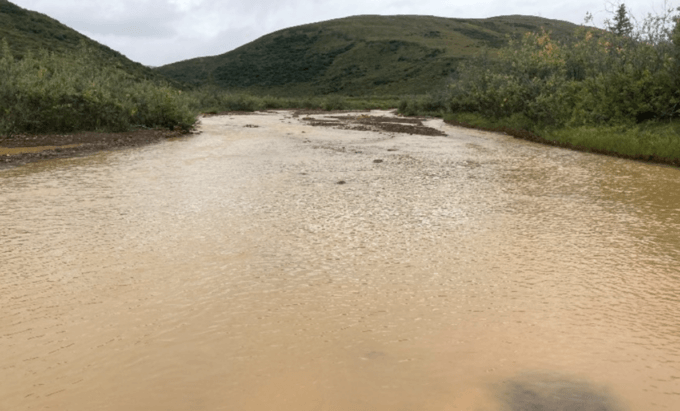
Irish Sea to be site of seismic blasting at cost of sea life
By Linda Pentz Gunter
Imagine being subjected to ear-shattering blasts every ten seconds, twenty four hours a day for four straight weeks? By any metric, that would qualify as the most appalling form of torture.
But that is exactly what is about to be inflicted on whales, dolphins, seals and other marine creatures in the Irish Sea if a new wave of opposition cannot stop it.
The Irish Sea is already the most radioactive sea in the world, in large part a result of decades of radioactive discharges from the Sellafield reprocessing facility on the Cumbrian shoreline.
Now, Nuclear Waste Services (NWS) has contracted a company called Shearwater Geosciences to blast its undersea seismic airguns off the Cumbria coast this summer, calling it “scientific research”.
NWS, a division of the Nuclear Decommissioning Authority, is tasked with finding a Geological Disposal Facility (GDF) to accommodate the millions of tons of radioactive waste left over from Britain’s commercial nuclear power program.
Estimates put the cost of the project — paid by taxpayers of course — at between 20 billion to 53 billion pounds.
NWS has been exploring sites exclusively in Cumbria, either close to the coast or extending up to the 22km outer limit of UK territorial waters. The seismic blasting is designed to test the geology beneath the seabed for suitability for an undersea nuclear waste dump.
Terming the project ‘scientific research’ allowed NWS to be granted an exemption for the project, meaning it was not first required to secure a Marine License. The exemption also allowed the project to avoid public scrutiny and meaningful stakeholder engagement.
NWS got the exemption and green light from the Government’s Marine Management Organisation (MMO), whose Chief Executive, Tom McCormack, has now been sent a letter signed by prominent environmental groups and individuals, calling for the exemption to be rescinded.
Far from ‘scientific research’, blasting the sea bed with high decibel airguns is a desperate effort to find a suitable GDF somewhere, and fast. The unsolved radioactive waste disposal problem remains the Achilles’ heel of the nuclear power industry, which is looking to expand under the latest reckless Tory Government energy plan.
The groups signing the letter argue that the project has nothing to do with pure scientific research and is instead a massive commercial engineering venture that ignores the known science about the very real harm these activities can inflict on marine life.
“The level of noise created by each airgun blast is up to 259 decibels — strong enough to kill a human,” the letter read. “They are roughly 100,000 times more intense than a jet engine.”
Marine animals can hear low-frequency sounds such as those made by seismic airguns as much as 4,000 km away. The blasting interferes with their ability to navigate, mate, evade predators, find food, and nurture their young. It has been shown to damage their hearing and cause immense stress, leading to disorientation and starvation.
Research has clearly shown that “Seismic testing can seriously impair the health of marine life, which in the Irish Sea includes whales, dolphins, porpoises, and seals, but some scientific reports also suggest that even tiny shellfish and plankton can be adversely impacted, hazarding the whole marine ecosystem,” said a press release from the Nuclear Free Local Authorities (NFLA), one of the signatories to the letter.
In addition to the harm to marine animals living in the Irish Sea, which is already a Marine Protected Zone, the signatories object to the radioactive waste dump itself which, they point out, will inevitably leak its toxic inventory into the marine environment.
“It is quite inconceivable that a manmade storage environment, however well engineered, will prevent this inevitability over the course of centuries,” read the letter to McCormack.

The planned seismic blasting and the dump itself was protested at a June 9 rally in Whitehaven in an event to “Celebrate and Protect the Whale and the Snail of the Irish Sea.” The rally took place at Whitehaven Harbour with messages of support from Nuclear Free Local Authorities, An Taisce – The National Trust For Ireland, renowned environmentalist Jonathon Porritt and many other groups both national and international.
The activist group, Radiation Free Lakeland, originally obtained and shared the “exempt” documents, in addition to organizing the letter to the MMO, and other awareness-raising activities. The organization is currently raising funds for an expert report into the impacts of airgun blasting on marine life in the Irish Sea being written by marine biologist, Tim Deere-Jones.
Marianne Birkby of Radiation Free Lakeland has also created a petition directed at NWS, MMO and Copeland Borough Council. The petition remains open for signatures. In addition, the campaign is encouraging people to email McCormack ([email protected]) asking for the NWS “exemption” to marine licensing to be revoked and to ensure that a European Protected Species permit is not awarded.
Demanding a postponement of the seismic testing and getting the exemption rescinded would force NWS to apply for a proper Marine License. This opens the way for a full period of consultation, enabling marine welfare and environmental charities in Britain, Ireland and the Isle of Man, along with other government agencies, to weigh in.
“According to the NWS, finding a site for the nuclear waste dump is meant to be based upon public consent,” said Councillor David Blackburn, Chair of the NFLA Steering Committee. “But if the public do not know anything about the testing, how can they consent and, more importantly, how can they object?”
A shorter version of this article first appeared in The Morning Star.
Headline photo of Minke Whale, the most common whale to be found in the Irish Sea, by National Marine Sanctuaries/Wikimedia Commons.



